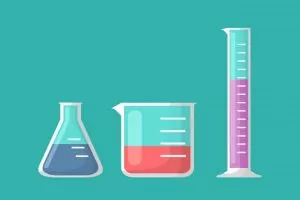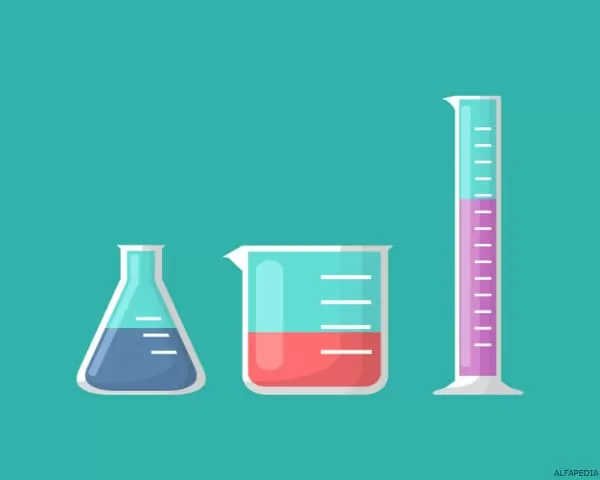Laboratory Beakers Types
There are four main types of vessels and they are classified by their shape:
- The standard beakers known as the Griffin beaker are lower beakers and their height is approximately 40% of their diameter.
- The highest beaker is known as the Berzelius beaker. It is thin and its height is twice its diameter.
- The third type is a flat vessel called a crystallizer. While many beakers will have markings, crystallizer beakers generally will not have measuring marks.
- The fourth type is the Phillips beaker. While the Philips may look like a Griffins beaker with a more detailed examination, you will see that the walls of a Philips are tilted and graduated towards the mouth of the beaker, so the mouth of the beaker is narrower than its base.
Another important distinction that can be overlooked is the level of heat resistance of different beaker vessels. Some vessels are heat-resistant and allow chemicals to be heated and boiled, while other vessels will measure predominantly cold liquids.
The glasses have their primary use. Griffin and Philips beakers handle most of the daily use in the laboratory with measurement, containment, mixing and decanting tasks in the laboratory process. The Berzelius beaker is used for titration experiments where solutions are mixed to generate results. Flat-shaped beakers are used to heat hot baths.
Plastic beakers are used specifically for gamma spectral analysis and similar experiments. You may be wrong to use marks for accurate measurement, but a graduated cylinder or flasks are used to generate accurate measurements.
Griffin Cup
Standard beakers are also called “low form” and have a height of approximately one and a half times the diameter. The low-shaped beaked beaker was invented by John Joseph Griffin, so it is often referred to as a Griffin beaker.
The purpose of beakers like these can range from preparing solutions and decanting liquids to performing simple reactions. A standard beaker can be used in almost any chemical experiment.
Griffin beakers are characterised by their low shape and offer excellent mechanical strength and durability, while providing high resistance to chemical attack and thermal shock. They have been a basic element in research laboratories for many generations.
Slightly bell-shaped, thick, beaded top with a spout designed to have excellent pouring characteristics.
Improved mechanical and thermal properties result from uniform sidewall design and bottom thickness
Suitable for use on a heating plate
All sizes have a durable matte finish marking area for use with an ordinary pencil
An easy-to-read white graduated scale is provided for measuring and/or mixing liquids in all sizes from 20 to 4000 ml.
Glass of Berzelius
The high-shaped Berzelius-style tumbler is available in a variety of sizes 100-, 200-, 300-, 400-, 500- and 600- mL and 1-L.
Berzelius-style tall beakers are generally about twice the height of the width, and are often used in titration operations.
Each size has an extra large marking area and meets the American Society of Mechanical Engineering’s E960 standards.
Precipitation vessels are used for measurement, quality testing, sampling and research, and in laboratory applications in chemistry, education, research and life science applications. They have screen-printed graduations, pour peak and extra large marking area.
Flat Tumbler
Flat beakers are also called crystallizers because they are the most popular for inducing crystallization. However, they are also used to heat hot baths.
Classification of Precipitated Cups by Capacity and Volume (50, 100, 250, 500, 600 and 1000 ml)
Glass 50 ml
Griffin’s low form beakers can be steam autoclaved at 121°C (250°F) and placed in the microwave.
High numerical graduations show an approximate volume (± 5%). Stack without sticking.
Beakers meet ASTM E-960 Type I specifications for classification, design, capacity and dimensions, and markings.
These beakers feature easy pour nozzles, permanent white graduations, and large marking squares. Manufactured with a uniform wall thickness resulting in the optimum balance between thermal shock resistance and mechanical strength.
Capacity Graduations Upper Height Lower O.D. O.D.
50 ml Each 10 ml 48,3 mm 50,8 mm 40,6 mm
Glass 100 ml:
Griffin-shaped beakers can be steam autoclaved at 121°C (250°F) and placed in the microwave.
Capacity Graduations Upper Height Lower O.D. O.D.
100 ml Each 25 ml 66,0 mm 64,0 mm 50,8 mm
Glass 250 ml:
High numerical graduations show an approximate volume (± 5%). Stack without sticking.
Capacity Graduations Upper Height Lower O.D. O.D.
250 ml Each 50 ml 69,0 mm 83,8 mm 66 mm
Glass 600 ml:
Griffin low form polypropylene beakers can be steam autoclaved at 121°C (250°F) and placed in the microwave.
Capacity Graduations Height Upper O.D. O.D. Lower O.D.
600 ml Each 50 ml 69,0 mm 83,8 mm 66 mm
Glass (polypropylene) 1000 ml:
Griffin low form polypropylene beakers can be steam autoclaved at 121°C (250°F) and placed in the microwave.
1000 ml Each 200 ml 152.4 mm 127 mm 101.6 mm
Classification of Precipitated Cups by Material of Manufacture (Borosilicate Cup, Normal and Unmetered)
The glasses come in various materials. In general, glass cups have higher chemical and temperature tolerances, and are easier to sterilize.
Plastic cups are safer (little or no breakage), lighter, easier to store, and less expensive.
Metal beakers are safe, but they are opaque and tend to be expensive.
Glass: The most common material is borosilicate glass, which has a low coefficient of expansion, excellent thermal performance and high resistance to chemical attack. Pyrex (Corning) and Kimax (Kimble) are borosilicate glass brands.
Chemicals can be abrasive and when using glassware it is important to remove any residue to protect glass, standards and quality.
Looking for appropriate cleaning solutions to ensure that the cleaning process is successful in preparing the beakers and general glassware for reuse.
Once the correct cleaning fluid is chosen, the correct cleaning pads and brushes must be chosen to protect the glass from abrasive cleaning brushes and pads that can also affect the glass.
Plastic: Some common plastics in beaker and beaker properties are translucent ethylene-chlorotrifluoroethylene ECTFE, excellent chemical resistance, low temperature resistance; Halar is a Solvay Solexis brand).
Semi-opaque PE polyethylene, excellent chemical resistance, low temperature resistance, transparent PMP polymethylpentene, excellent chemical resistance, temperatures up to 150 ° C, autoclavable.
TPX is a brand of Mitsui Chemicals, Inc., semi-opaque polypropylene (PP), superior chemical resistance, temperatures up to 121°C, autoclavable, or semi-opaque or opaque PTFE polytetrafluoroethylene, significant chemical resistance, temperatures up to 260°C; Teflon is a DuPont brand.
Special attention should be paid to the specific properties of any plastic used.
Metal: These cups are opaque, lightweight, durable and easy to clean. Aluminum beakers can be heated up to 340°C; stainless steel beakers are safe up to 550°C.
Related Topics
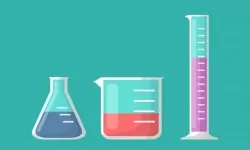
THE BEST BEAKER PRICE

WHO INVENTED THE BEAKER ? History and Origins

WHAT IS A BEAKER USED FOR ?

BEAKER FEATURES

WHAT IS A BEAKER ? Its Definition

PRECAUTIONS WHEN USING A BEAKER ?
Other Laboratory Materials and Instruments in ALPHAPEDIA
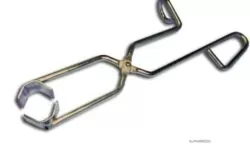
LAB TWEEZERS USE

LABORATORY TWEEZER TYPES
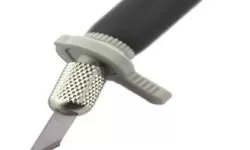
INDUSTRIAL SCALPEL

PRECAUTIONS WHEN USING A BEAKER ?

NUMAXES SCALE: Prices and Offers
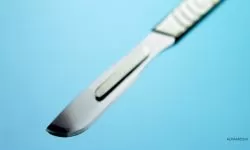
SCALPEL MEANING
Other Topics of Interest in ALPHAPEDIA

FREE TOURISM COURSE

FREE DOCTORATE IN ARTS

FREE BACHELOR OF SCIENCE IN ACCOUNTING

FREE MASTER DEGREE IN STRUCTURAL ENGINEERING

HOW TO PAINT OLD FURNITURE ?

FREE CELL PHONE COURSE
Beaker Image
